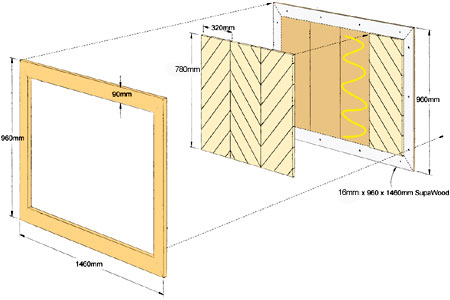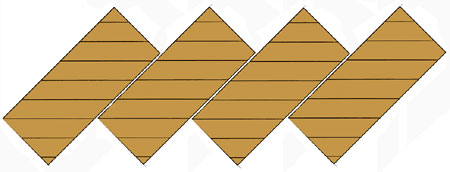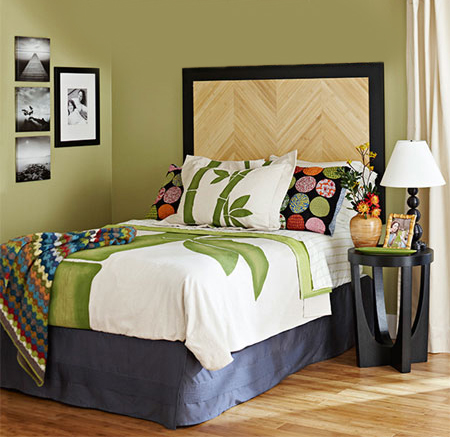Make a DIY bamboo headboard
Use bamboo board to create a herringbone pattern for a clean-lined headboard.
YOU WILL NEED:
Sheet of 16mm bamboo board
16mm SupaWood cut to sizes:
[1] 960 x 1460mm for the backing board
[1] 960 x 1460mm for the front frame
Tube No More Nails
3 x 25mm wood screws
Wood filler
180-grit sandpaper
Rust-Oleum spray primer
Rust-Oleum 2X black spray paint
TOOLS:
Jigsaw
Clamps
Drill/driver and assorted drill and screw bits
Tape measure
1 metre straight edge
Pencil
Masking tape
HERE'S HOW:
1. Use your tape measure and straightedge to mark lines 90mm in from each edge of the backing board and the front frame. Put the front frame aside for the time being. In the space between the pencil lines, draw three equally spaced lines between the long edges (top and bottom) of the headboard back to divide the space into four equal parts. Then, set the headboard aside while you work on the herringbone panels.
2. Cut the bamboo board into four 320 x 780mm sections. Working on a flat surface, the sections need to be cut at a 45-degree angle in order to create the herringbone design.
DIY Tip:
Use brown paper or cardboard to create a template to the size of one section and then step and repeat this across the board at a 45-degree angle to create four equal sections.
3. Lay out the section inside the four sections marked on the headboard back to confirm the fit. Cut or sand as needed and then use No More Nails to glue the sections to the backing board.
4. On the front frame, use a jigsaw to cut along the drawn lines to remove the centre section. Dry fit over the glued sections to test and then apply No More Nails adhesive to the back of the frame to affix to the backing board.
5. Sand and paint the frame and let dry before clamping to the headboard back. For added strength, drill 2mm pilot holes through the headboard back and into the frame and secure with 3 x 25mm wood screws.
6. Place two keyhole brackets 20mm down from the top and 20mm in from each side and mark the centre hole with a pencil. Remove the brackets and drill out for the mounting holes. Attach the keyhole brackets onto the frame.





